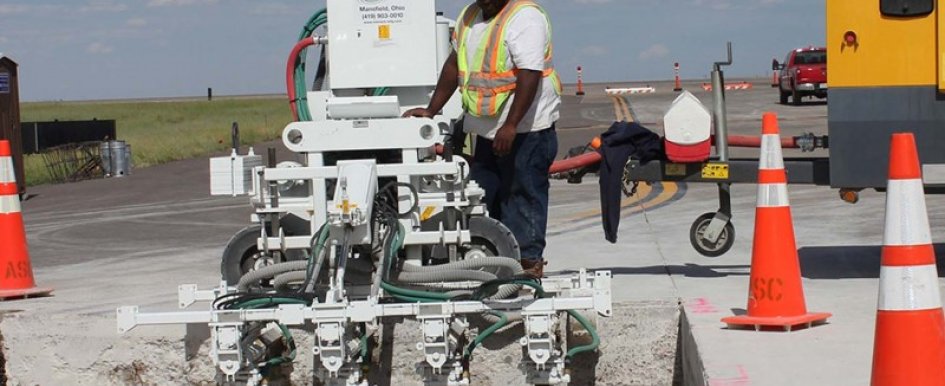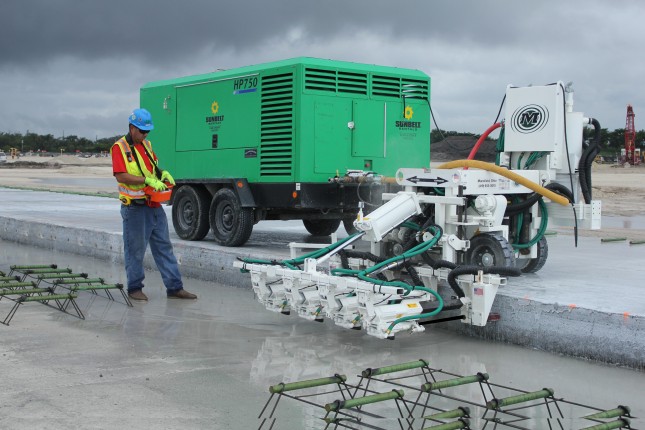
The Occupational Safety and Health Administration (OSHA) recently issued a final rule for silica dust exposure. Despite legal challenges to the standard, OSHA reportedly expects no delay in implementation.
For the construction industry, OSHA’s new silica standard went into effect on June 23, 2016. With the compliance date scheduled for June 23, 2017, dowel-pin drill manufacturer Minnich Manufacturing is working to make contractors aware of how the new rule impacts concrete dowel-pin drills used in road, highway and airport runway construction.
How You Can Comply
Developed to better protect the health of American workers, the new rule requires that construction employers limit worker exposure to respirable crystalline silica in construction activities, including dowel-pin drilling.
Construction employers covered by the standard basically have two alternatives to satisfy the rule’s requirements:
- Measure their workers’ exposure to silica and independently determine which dust controls work best to reduce exposure to the new permissible exposure limit (PEL). Exposure measurements can be expensive and time-consuming to perform.
- Use a dust-control approach outlined in “Table 1: Specified Exposure Control Methods When Working with Materials Containing Crystalline Silica.” Table 1 lists effective dust control methods and work practices that can be used to achieve the requirements of the new rule.
There are several additional requirements construction employers must meet regardless of which exposure control path they take. These include implementing a written exposure control plan, offering medical exams and training workers on ways to limit exposure. (Visit OSHA for complete requirements.)

How Table 1 Applies to Dowel Pin Drilling
Table 1 states that, for tasks performed outdoors only, dowel-pin drill operators can comply by using a shroud around the drill bit with a dust collection system. The dust collector must have a filter with 99 percent or greater efficiency and a filter-cleaning mechanism.
According to the Table 1 section on dowel drilling, workers must also use a respirator with an assigned protection factor (APF) of at least 10. A HEPA-filtered vacuum must be used when cleaning holes.
Where You Can Get More Information
The OSHA website and local dowel-pin drill dealers can serve as valuable resources as contractors take steps toward compliance.
On the OSHA website, contractors can access a variety of resources about the rule, including the full text of requirements, a fact sheet, a frequently asked questions document and a video. Website visitors also can register for silica rule email updates and submit questions via email.
